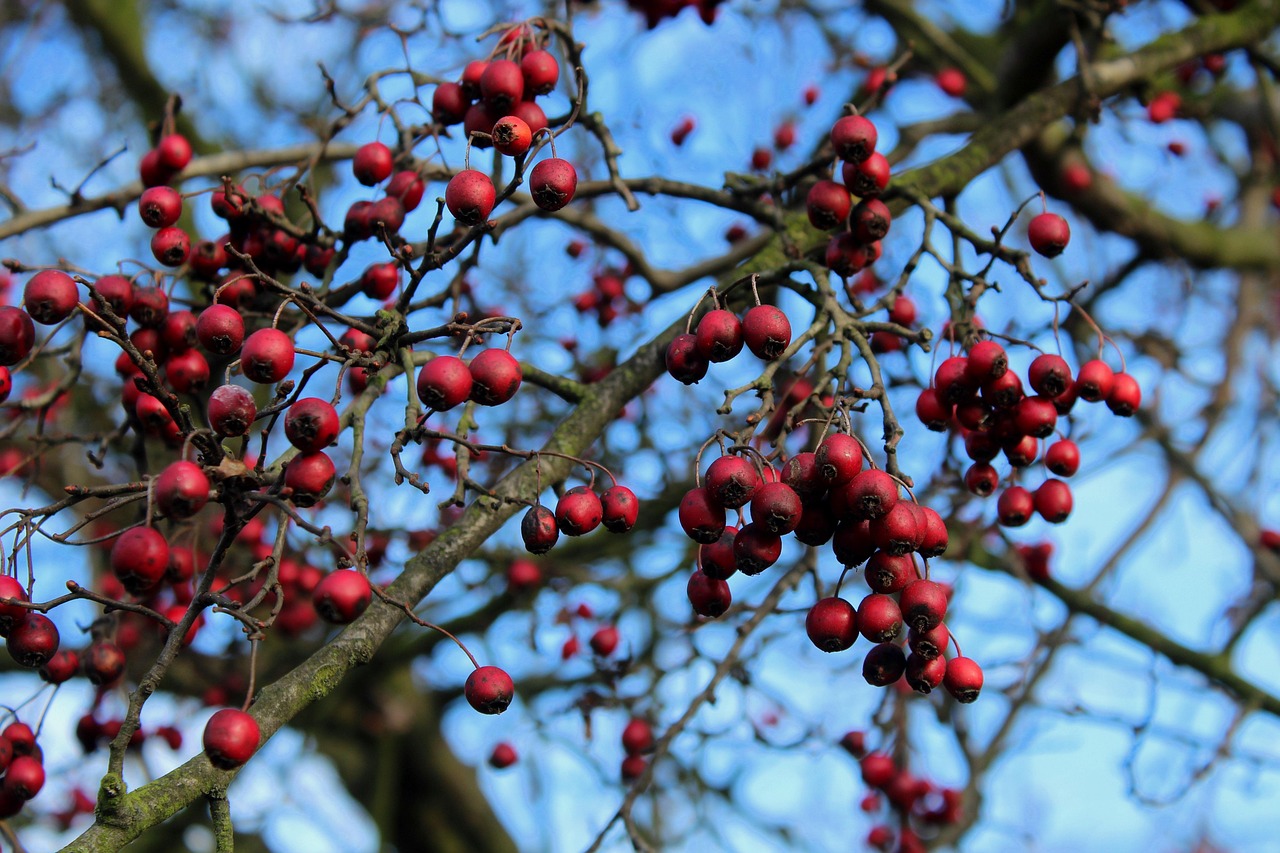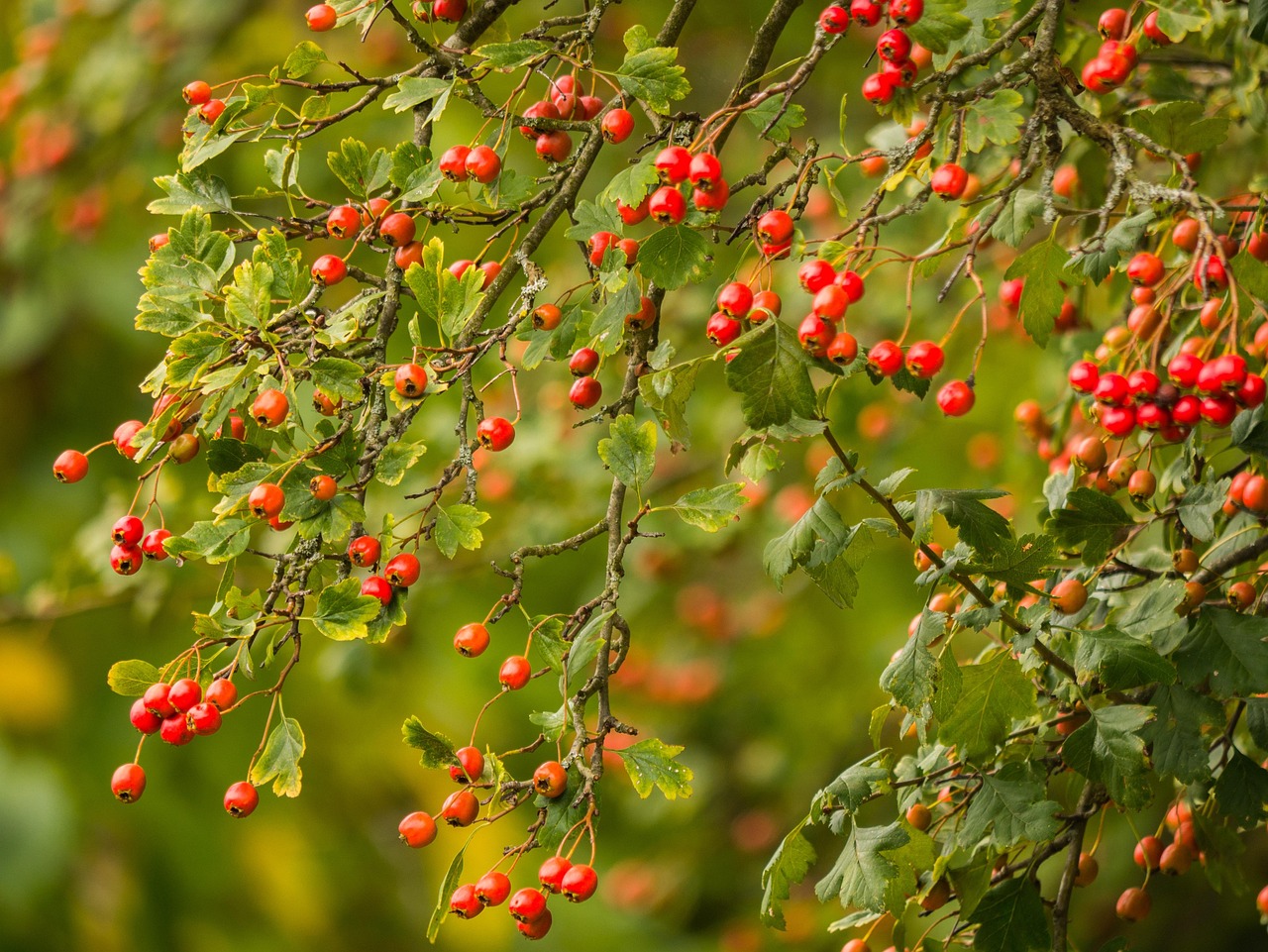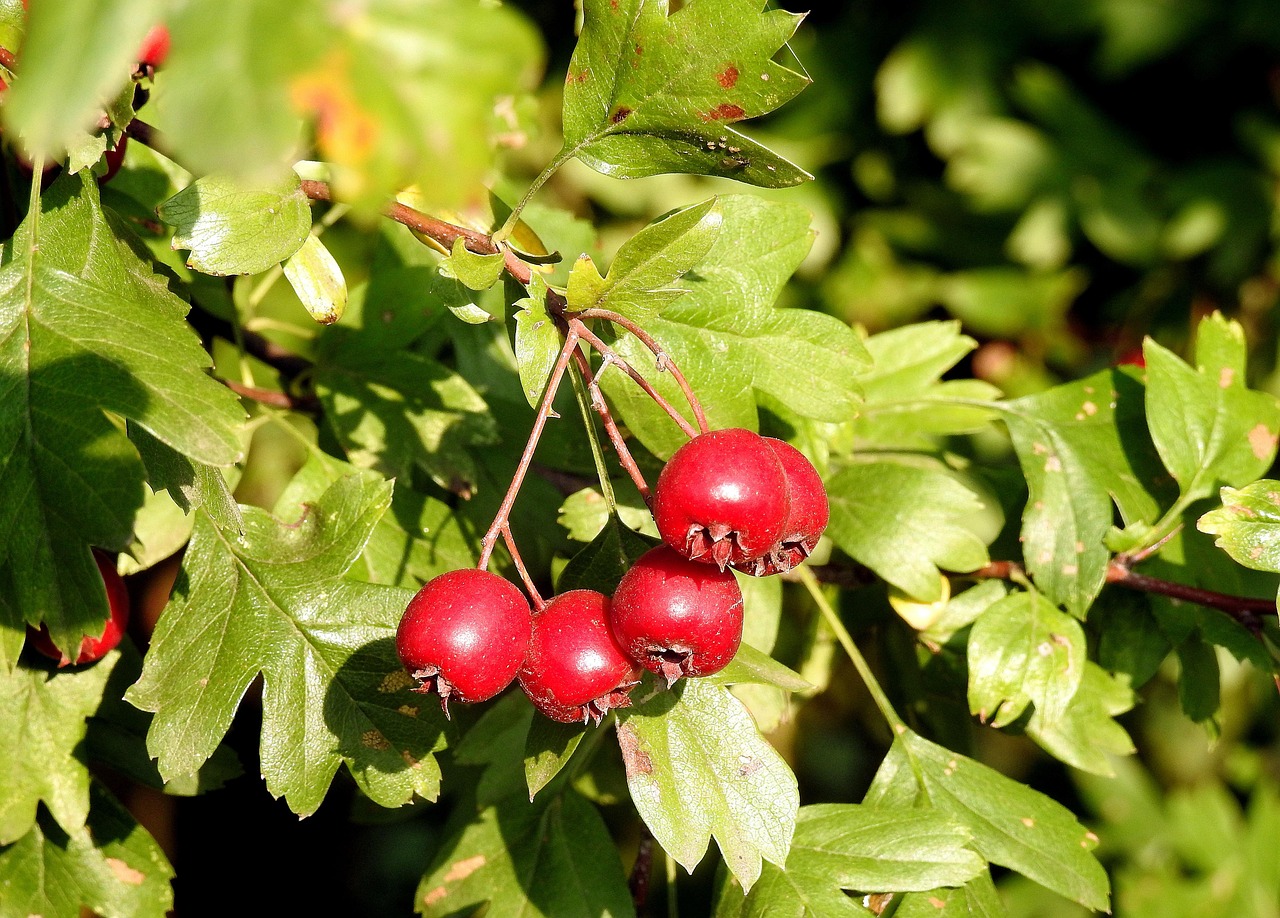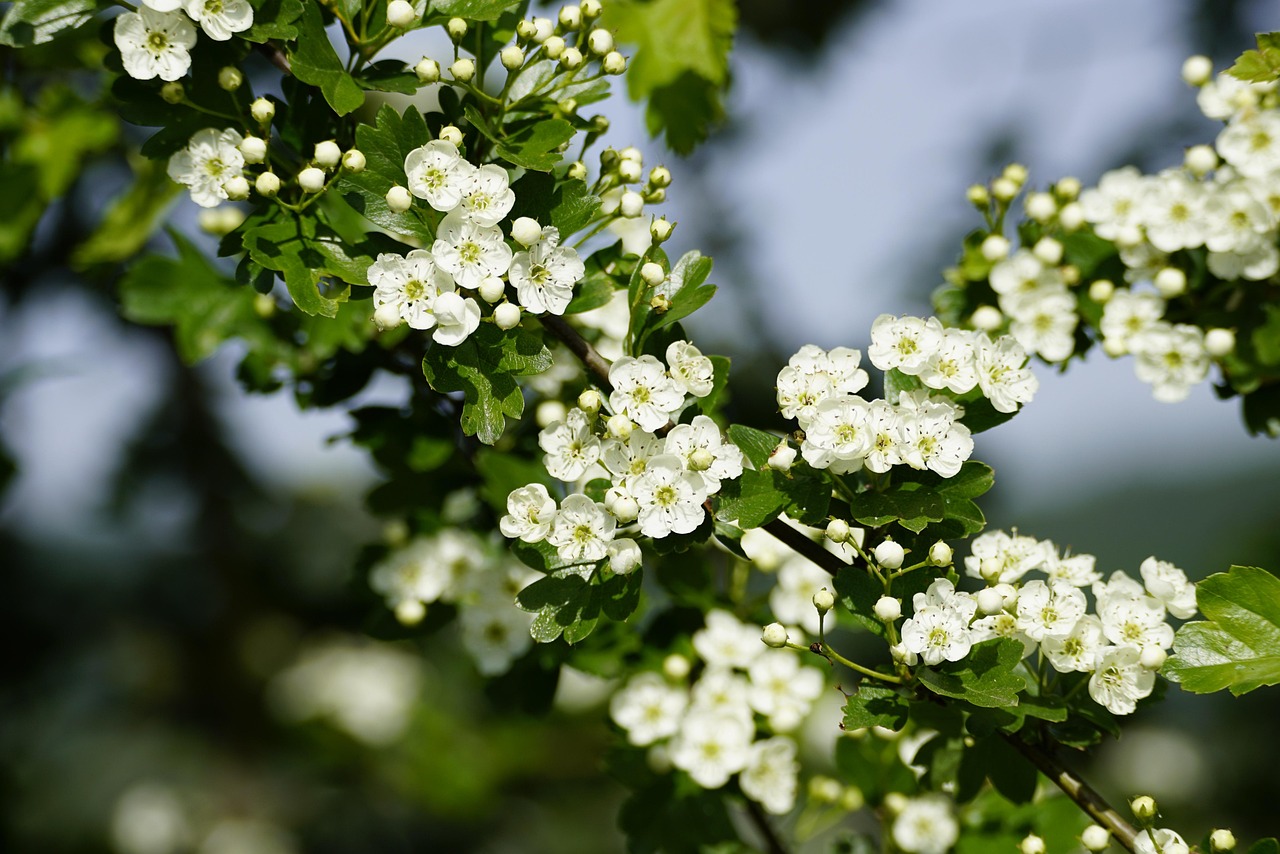The hawthorn tree, known for its adaptability, typically exhibits a moderate growth rate of about 1 to 2 feet per year. This rate can vary based on factors such as soil quality, water availability, and overall climate conditions. Its growth makes it an excellent choice for wildlife habitats and hedgerows.
Hawthorn trees, belonging to the Crataegus genus, are native to Europe, Asia, and North America. They are known for their dense foliage, beautiful flowers, and vibrant berries. These characteristics make them not only aesthetically pleasing but also valuable to wildlife and as natural barriers in landscaping. Their growth habits and structure play a significant role in providing habitat for various species.

Understanding the growth rate of hawthorn trees is essential for gardeners and landowners. It helps in planning hedges, wildlife corridors, or even solitary plantings. The establishment of hawthorn hedges can offer numerous benefits, including privacy, windbreaks, and food sources for birds and other wildlife.
Growth Factors of Hawthorn Trees
Several factors influence the growth rate of hawthorn trees. These include soil type, moisture levels, light exposure, and climate conditions. Each aspect contributes to the overall health and vigor of the tree.
- Soil Type: Hawthorn trees thrive in well-draining soils rich in organic matter. Poorly drained or compacted soils can hinder their growth.
- Moisture: While hawthorn trees are drought-tolerant once established, consistent watering during their early years encourages quicker growth.
- Light Exposure: These trees prefer full sun to partial shade. Adequate sunlight promotes healthier foliage and more robust growth.
- Climate: Hawthorn trees adapt well to various climates but flourish best in temperate regions with distinct seasons.
Understanding these factors can help in selecting the right location for planting hawthorn trees, ensuring they reach their full potential.

Wildlife Benefits of Hawthorn Trees
Hawthorn trees serve as a vital resource for wildlife. Their flowers attract pollinators such as bees and butterflies. Additionally, the berries produced in late summer provide essential food for birds and small mammals during the fall and winter months. The dense thickets formed by hawthorn shrubs offer shelter and nesting sites for various species.
| Wildlife Supported | Benefits |
|---|---|
| Birds | Nesting sites and food source (berries) |
| Pollinators | Nectar from flowers |
| Mammals | Shelter and food source |
The ecological role of hawthorn trees extends beyond providing food. They contribute to the structural diversity of habitats by creating layers of vegetation. This complexity supports a wider variety of species and enhances biodiversity within ecosystems.
Using Hawthorn Trees in Hedges
Hawthorn trees are popular choices for hedging due to their dense growth and thorny branches. These features not only create effective barriers but also enhance security in residential areas. When planted close together, hawthorns can form a thick hedge that deters intruders while providing a habitat for wildlife.

To establish a successful hawthorn hedge, consider the following guidelines:
- Select healthy young plants from a reputable nursery.
- Space plants approximately 2 to 3 feet apart to allow for adequate growth.
- Prepare the planting area by loosening the soil and adding organic matter.
- Water regularly during the first few years to promote strong root development.
- Prune regularly to maintain shape and encourage bushier growth.
With proper care, a hawthorn hedge can flourish over time. It will provide beauty, functionality, and vital ecological benefits.
Maintenance of Hawthorn Hedges
Maintaining hawthorn hedges is essential for ensuring their health and longevity. Regular care not only promotes growth but also enhances their attractiveness and effectiveness as barriers. Here are key maintenance practices to consider:

- Watering: While established hawthorn trees are drought-tolerant, young plants require consistent moisture. Water newly planted hawthorns deeply once a week, especially during dry spells.
- Pruning: Prune hawthorn hedges annually in late winter or early spring. This practice encourages bushier growth and helps maintain the desired shape. Remove any dead or diseased branches as needed.
- Pest Management: Keep an eye out for common pests such as aphids and spider mites. A gentle spray of water can often dislodge these pests. If infestations occur, consider using insecticidal soap as a natural remedy.
- Fertilizing: Apply a balanced fertilizer in early spring to support robust growth. Follow package instructions for the correct application rate.
Common Pests and Diseases
Like all plants, hawthorn trees can be susceptible to various pests and diseases. Awareness of these issues enables proactive management and helps maintain the health of your hedges.
| Pest/Disease | Symptoms | Treatment |
|---|---|---|
| Aphids | Sticky residue on leaves, curling leaves | Use insecticidal soap or neem oil |
| Spider Mites | Webbing on leaves, yellow spots | Increase humidity or use miticides |
| Crown Gall | Swelling at the base of the plant | Remove affected plants; ensure proper drainage |
| Leaf Spot | Brown or black spots on leaves | Improve air circulation; apply fungicide if severe |
By monitoring for these pests and diseases, you can take timely action to protect your hawthorn hedge and maintain its health.
Hawthorn Trees in Different Climates
The adaptability of hawthorn trees makes them suitable for a variety of climates. However, their growth rates and overall health can vary significantly depending on the environmental conditions. Understanding how hawthorns perform in different climates can guide planting decisions.
Temperate Climates
In temperate regions, hawthorn trees thrive due to distinct seasonal changes. They benefit from warm summers and cold winters, which helps in their dormancy cycle. Hawthorns in these areas typically exhibit robust growth, reaching heights of 10 to 30 feet over time.
Tropical Climates
Hawthorn trees can struggle in tropical climates due to high humidity and constant temperatures. While they may grow well with adequate moisture, their growth may be slower. Planting in well-draining soil and providing some shade can help improve their performance.
Arid Regions
In arid climates, hawthorn trees may exhibit drought tolerance once established. However, they require careful watering during the initial establishment phase. Mulching around the base can help retain moisture and reduce competition from weeds.
Benefits of Hawthorn Trees Beyond Hedges
While hawthorn trees are excellent for creating hedges, they offer additional benefits that extend into ecological and landscaping realms. Understanding these advantages can enhance their appeal to gardeners and landowners.
- Pollinator Support: The flowers of hawthorn trees bloom in spring and are a crucial food source for bees and other pollinators.
- Biodiversity Enhancement: The dense structure of hawthorn thickets supports various wildlife species, contributing to local biodiversity.
- Aesthetic Appeal: Hawthorn trees produce beautiful white or pink flowers followed by bright red berries, adding seasonal interest to landscapes.
- Soil Improvement: Their root systems help prevent soil erosion and improve soil structure over time.
The diverse benefits provided by hawthorn trees make them versatile additions to any landscape design, enhancing both ecological value and visual appeal.
Planting Techniques for Hawthorn Trees
Successful planting of hawthorn trees involves careful attention to technique and timing. Proper planting ensures strong growth and establishes a thriving hedge or wildlife habitat. Here are some key steps and considerations for planting hawthorn trees.
Choosing the Right Location
Selecting an appropriate location is crucial for the success of hawthorn trees. Consider the following factors:
- Sunlight: Hawthorn trees prefer full sun but can tolerate partial shade. Ensure the location receives at least six hours of sunlight daily.
- Soil Quality: Well-draining soil rich in organic matter will promote healthy growth. Conduct a soil test to determine pH and nutrient levels.
- Space: Ensure enough space for the trees to grow. If planting as a hedge, consider the mature width of hawthorn trees.
Best Planting Practices
Once the location is chosen, follow these steps for planting hawthorn trees:
- Time of Planting: The best time to plant hawthorn trees is in early spring or late fall when the weather is mild.
- Digging the Hole: Dig a hole that is twice as wide and just as deep as the root ball. This allows roots to spread easily.
- Soil Preparation: Mix native soil with organic compost to improve fertility and drainage before backfilling.
- Planting Depth: Place the tree in the hole so that the root collar is level with the soil surface. Avoid planting too deep.
- Watering: Water thoroughly after planting to eliminate air pockets and help settle the soil around the roots.
Hawthorn Trees in Landscape Design
Hawthorn trees can enhance landscape design through their aesthetic qualities and ecological benefits. Their unique features make them suitable for various design styles.
Using Hawthorn in Mixed Borders
Mature hawthorn trees can provide structure and seasonal interest in mixed borders. They can be combined with other plants to create dynamic landscapes. Consider pairing them with:
- Flowering Perennials: Plants like coneflowers and black-eyed Susans can complement the hawthorn’s blooms.
- Evergreen Shrubs: Incorporating evergreens provides year-round structure and contrast to deciduous hawthorns.
- Ground Cover Plants: Low-growing plants like creeping thyme can enhance visual appeal while suppressing weeds.
Creating Wildlife Habitats
Integrating hawthorn trees into wildlife gardens supports local fauna while enhancing garden beauty. Here are some strategies for creating effective wildlife habitats:
- Diverse Plantings: Incorporate a variety of native plants to attract different species of wildlife.
- Nesting Sites: Leave some areas of your garden wild or unpruned to provide natural nesting sites for birds.
- Water Sources: Adding birdbaths or small ponds can attract additional wildlife, creating a vibrant ecosystem.
The Role of Hawthorn Trees in Ecosystems
The ecological role of hawthorn trees extends beyond individual gardens. They contribute significantly to broader ecosystems, supporting biodiversity and improving environmental health.
Erosion Control
The root systems of hawthorn trees help stabilize soil, preventing erosion on slopes and riverbanks. They are particularly useful in areas prone to soil movement due to heavy rain or wind.
Carbon Sequestration
Like all trees, hawthorns play a role in carbon sequestration. They absorb carbon dioxide from the atmosphere, contributing to climate change mitigation efforts. Planting more hawthorn trees can help offset carbon emissions and improve air quality.
Harvesting Hawthorn Berries
The berries produced by hawthorn trees are not only attractive but also edible. They have been used in traditional medicine and culinary applications for centuries. Understanding how to harvest and utilize these berries can add value to your gardening efforts.
Harvesting Tips
When it comes to harvesting hawthorn berries, consider these guidelines:
- Timing: Harvest berries in late summer or early fall when they turn bright red and are fully ripe.
- Method: Gently twist or cut the clusters from the branches with clean shears to avoid damaging the tree.
- Storage: Store fresh berries in a cool place or refrigerate them for short-term use. They can also be dried or made into jams and jellies for longer preservation.
The versatility of hawthorn berries adds another layer of utility to these remarkable trees, making them a valuable addition to any landscape. Their growth rate, adaptability, and ecological significance solidify their place in both wildlife conservation and garden aesthetics.
Additional Uses of Hawthorn Trees
Beyond their ecological benefits and aesthetic appeal, hawthorn trees offer a variety of additional uses that can enrich gardens and landscapes. These uses capitalize on the tree’s unique characteristics and contribute to sustainable practices.
Medicinal Uses
Hawthorn has a long history of use in traditional medicine. Various parts of the tree, including leaves, flowers, and berries, are known for their health benefits. Here are some common medicinal applications:
- Heart Health: Hawthorn is often used to improve cardiovascular health. It is believed to enhance blood circulation and strengthen heart function.
- Anxiety Relief: The calming properties of hawthorn may help alleviate symptoms of anxiety and stress.
- Digestive Aid: Some herbalists recommend hawthorn for digestive issues, aiding in digestion and relieving discomfort.
Always consult with a healthcare professional before using hawthorn for medicinal purposes to ensure safety and proper usage.
Culinary Uses
In addition to their medicinal properties, hawthorn berries can be used in various culinary applications. Their sweet-tart flavor makes them suitable for numerous recipes:
- Jams and Jellies: Hawthorn berries can be cooked down with sugar to make delicious jams and jellies.
- Fruit Leather: Puree the berries and dehydrate them to create healthy fruit leather snacks.
- Beverages: Brew hawthorn tea or incorporate the berries into smoothies for added flavor and nutrients.
Environmental Impact of Hawthorn Trees
The environmental impact of planting hawthorn trees extends beyond individual gardens. Their integration into community spaces, parks, and natural habitats supports broader ecological goals.
Supporting Local Wildlife
By providing food and shelter for various species, hawthorn trees play a critical role in supporting local wildlife populations. They create essential habitats that promote biodiversity. The dense thickets serve as nesting sites while the berries provide nourishment during winter months when food is scarce.
Enhancing Urban Spaces
In urban environments, hawthorn trees can help mitigate some challenges associated with city living. They contribute to urban greening efforts by:
- Improving Air Quality: Trees absorb pollutants and produce oxygen, enhancing overall air quality.
- Reducing Heat: The shade from hawthorn trees can lower temperatures in urban areas, providing a cooling effect.
- Stormwater Management: Their root systems help manage stormwater runoff, reducing flooding risks and improving water absorption into the soil.
Final Thoughts
The hawthorn tree stands out as a versatile and valuable addition to any landscape. Its moderate growth rate, adaptability to various climates, and ecological significance make it an ideal choice for gardeners and landowners alike. Whether used for creating hedges, supporting wildlife habitats, or enhancing the aesthetic appeal of gardens, hawthorn trees provide numerous benefits.
Furthermore, their medicinal and culinary uses add to their charm, making them more than just decorative plants. As communities increasingly prioritize sustainability and biodiversity, incorporating hawthorn trees into urban and rural landscapes can play a vital role in fostering healthier ecosystems.
By understanding the growth rate, care requirements, and diverse uses of hawthorn trees, individuals can make informed decisions that benefit both their gardens and the environment. As we seek to create more sustainable spaces, the humble hawthorn tree deserves recognition for its significant contributions to wildlife conservation, landscape design, and community well-being.
